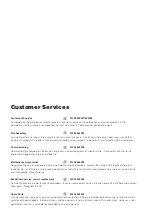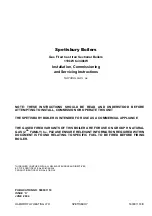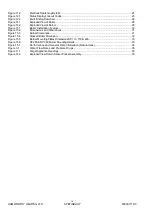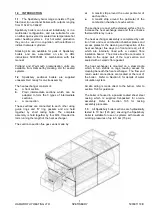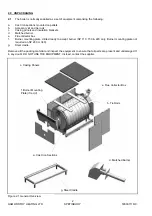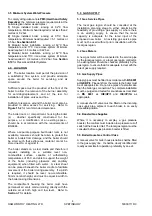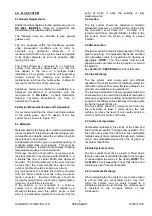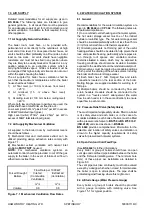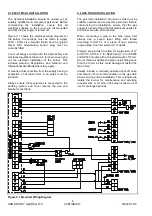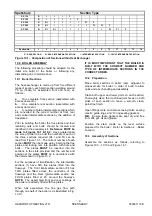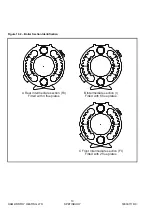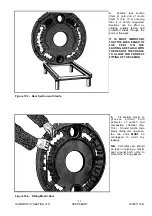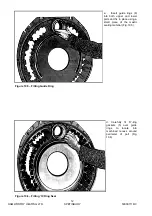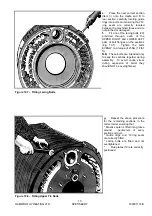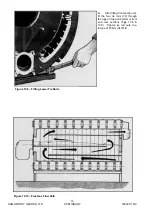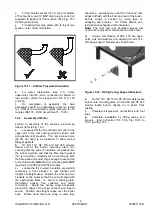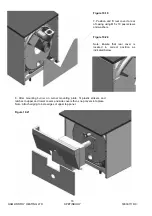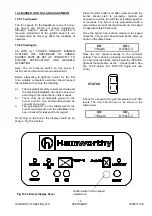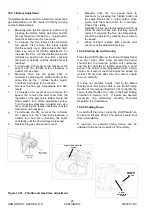
HAMWORTHY HEATING LTD
5
SPETISBURY
500001118/C
6.0 FLUE SYSTEM
6.1 General Requirements
Detailed recommendations for flue systems are given in
BS 6644
,
IGE/UP/10,
"Flues for Commercial and
Industrial Gas-Fired Boilers and Air Heaters."
The following notes are intended to give general
guidance only.
The flue passages within the Spetisbury operate
under pressurised conditions and in order to
eliminate any additional resistance, it is
recommended that the flue system shall be adapted
to its design diameter as soon as possible, after
leaving the boiler.
The boiler should be connected to a single flue
system in the case of a single boiler, or a common
flue header in the case of a multiple boiler
installation. Flue systems must be self supporting,
contain access for cleaning and contain a
maintenance joint near the boiler outlet to allow for
removal of the flue box during servicing.
Spetisbury boilers are suitable for installation in a
balanced compartment in accordance with the
requirements of
BS 6644.
Consult Hamworthy
Heating Technical Department for help or
assistance if in doubt.
6.2
Design Waste Gas Volume and Temperature
It is recommended that the volume and temperature
of the waste gases used for design of the flue
system are as shown in Figure 15.7.
6.3 Materials
Materials used for the flue system must be mechanically
robust, resistant to internal and external corrosion, non-
combustible and durable under the conditions to which
they are likely to be subjected.
Consideration should be given to possible freezing of
condense water traps and pipework. This must be
avoided at all times. Insulate condense pipes if freezing
temperatures are likely to be encountered.
Chimneys should be lined with a non-porous acid-
resistant material in accordance with BS.5854, e.g.
a flexible flue liner or similar British Gas Approved
material. The internal diameter of the liner must not
be less than the recommended flue size and the
number of joints should be kept to a minimum.
Any joint between the flexible liner and the flue pipe
from the boiler should be made using a purpose
made connector. Existing chimneys should be
thoroughly swept before use and any register plates,
dampers, or restrictions removed.
If the boiler(s) is not connected to a chimney
system, but is connected directly to outside by a
standard stainless steel flue (either single or twin
wall) it is particularly important to ensure that the
point at which it exits the building is fully
weatherproofed.
6.4 Suction
The flue system should be designed to maintain
atmospheric pressure or a slight suction at the boiler
flue connection at all times (0.1 - 0.3mbar). It is
recommended that a draught stabiliser is fitted to the
flue system where the suction is likely to exceed
0.3mbar.
6.5
Disconnection
Provisions should be made for disconnection of the flue
pipe for servicing. It is advisable that bends are fitted
with removable covers for inspection and cleaning as
appropriate.
NOTE!
The flue system must be self
supporting and not present a risk to people in or around
the building.
See
Section 13:
SERVICING
for further information
.
6.6 Flue Discharge
The flue system must ensure safe and efficient
operation of the boiler to which it is attached, protect the
combustion process from wind effects and disperse the
products of combustion to the external air.
The flue must terminate in a freely exposed position and
be situated so as to prevent the products of combustion
entering any opening in a building. Consideration should
be given to the fitting of a flue discharge terminal or grille
to stop the ingress of birds etc.
The flue system should be designed such that the
flue terminates at least 1 metre above the roof
surface, or above the level of any nearby structure
which is within 2.5 metres of the flue.
6.7 Surface Temperatures
Combustible materials in the vicinity of the boiler and
flue shall not exceed 65 °C during boiler operation. The
flue shall not be closer than 50mm to any combustible
material, except where it passes through such material
with a non-combustible sleeve when the air gap may
not be less than 25mm.
6.8
Flue System Location
The flue system must not be placed or fitted where
there is undue risk of accidental damage to the flue pipe
or undue danger to persons in the vicinity.
NOTE!
The
flue
MUST
be self supporting. Check that the flue and
chimney are clear from any obstruction.
6.9 Condensate Discharge
When designing the flue system, care must be taken
to ensure that any condensate which may form
within the system, can be safely drained to a
suitable waste point and, that the flue material used
is resistant to the corrosive effects of that
condensate.


